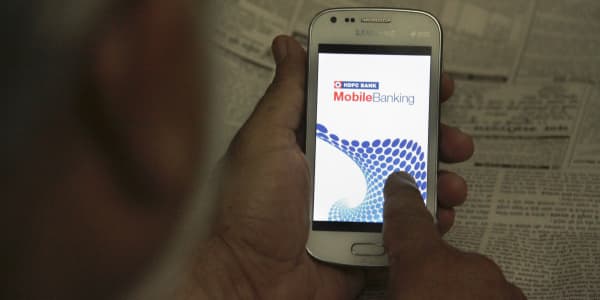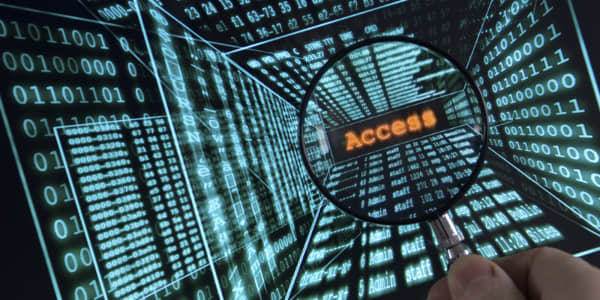Code-breaking US history
Before hackers, there were code breakers.
During World War II and continuing into the Cold War, government agents and private-sector technologists worked together to crack enemy ciphers, often building new machines to aid the effort.
Today many Americans associate the National Security Agency with efforts to hide the government's top-secret work from the general population. But that's not the case at the NSA's National Cryptologic Museum, located in Annapolis Junction, Maryland. It houses many examples of the country's top-secret code-breaking history, from spy plane wreckage to computers that were truly ahead of their time.
Here's a sampling of the spy secrets now on display from the government's most secretive agency.
—By Landon Dowdy and David Spiegel, CNBC.com
Posted 18 Oct. 2014
Purple decrypting machine
Conspiracy theories abound about whether the U.S. government knew the planned attack on Pearl Harbor was coming. The answer is that the U.S. government did in fact know ... something. It just didn't know enough—or soon enough.
The U.S. Army used this machine to hack an important message on the eve of the attack on Pearl Harbor. The machine was used to decrypt Japan's highly complex "Purple" code, cracked after 18 months of cryptoanalysis. According to the NSA, "Some believe this to be the greatest feat in cryptologic history."
The machine was able to uncover a message telling the Japanese ambassador to the United States to break off diplomatic relations on Dec. 7, 1941, at 1:00 p.m. Eastern time. The U.S. Army broke the message's code at 5:00 a.m. Unfortunately, it contained no information about a military attack.
"War was clearly imminent," the NSA display states, "but the message lacked details."
The Enigma
The German Enigma might be the world's most well-known cipher machine. It was used to encrypt tens of thousands of messages for the military during World War II.
But it's not likely the NSA would use the Enigma as a model for its own surreptitious work today. The NSA states that the Enigma is more famous for its lack of security than anything else.
"Allied forces were able to read most of the Enigma-encrypted messages throughout most of the war," the NSA museum display states. "The Allies' ability to read the Enigma-enciphered messages and act on that information shortened the war by as many as two years."
The "ally" most often associated with the Enigma is British mathematician and computer pioneer Alan Turing, who led the effort to decode Enigma messages for the British government. Winston Churchill is quoted as saying that Turing made the single greatest contribution to the Allied victory in WWII.
'Tunny' and Colossus
This German "Tunny" machine was a semi portable device used by the Third Reich to stream high-level encrypted messages via teleprinter, or telex, signals, rather than Morse code. The British began intercepting these messages in the second half of 1940, according to the Crypto Museum, a virtual museum based in the Netherlands.
The British generally referred to non-Morse code messages as "fish" and called the machine Tunny because it is British slang for tuna.
Once they cracked the code, messages often still took weeks to decipher. That process didn't speed up until the creation of Colossus, today regarded as the world's first programmable electronic computer. The room-size Colossus (a piece of which is seen on display to the left of the Tunny) cut decryption time from weeks to hours, the NSA museum display states.
A Soviet Trojan Horse
Beware of Russian kids bearing gifts.
A carving of the Great Seal of the United States was a gift from a group of Soviet schoolchildren to U.S. Ambassador to the Soviet Union W. Averell Harriman on Aug. 4, 1945. Harriman kept it on display in his Moscow office until 1952, when the State Department uncovered a small microphone hidden inside that the Soviets had been using to eavesdrop on the ambassador's conversations —for six years!
The NSA museum displays a replica version of the carving, which can be opened to reveal a copy of the microphone inside.
The John Nash letters
Decades before he earned a Nobel Prize in economics for his game theory research (and Russel Crowe portrayed him in the Oscar-winning "A Beautiful Mind"), Dr. John Nash tried to help the NSA with its cryptography.
In a series of letters between Nash and the NSA now on display at the museum, the then-math professor at MIT proposed a detailed idea for an encryption-decryption machine he claimed could employ a code that was "effectively unbreakable."
A letter dated Feb. 17, 1955, from the NSA to Dr. Nash explains the agency considered his proposals, but ultimately declined to adopt them. "It has been found," the letter states, "that the cryptographic principles involved in your system, although ingenious, do not meet the necessary security requirements for official application."
A spy named Powers
Francis Gary Powers, that is. The American pilot's U-2 reconnaissance aircraft was shot down over the Soviet Union in May 1960 during a mission for the Central Intelligence Agency. Powers survived the crash but was captured, along with the plane's wreckage.
Soviet premier Nikita Khrushchev accused the U.S. of spying and canceled a meeting between himself and President Dwight Eisenhower. Powers was ultimately charged with espionage and sentenced to prison.
The majority of the plane's wreckage remains at the Armed Forces Museum in Moscow. The museum gifted a piece of the wreckage to the NSA museum in 1994.
IBM HARVEST
The relationship between private industry and government intelligence agencies goes back a long way.
"NSA has been a silent partner with private industry from the earliest days of postwar computer development," the museum states. In some cases, well before the current battle between the government and technology companies over transparency, the NSA has also forced leading researchers to remain silent about sensitive projects.
Robert Morris, the onetime chief scientist for the NSA's Computer Security Center, was recruited from Bell Laboratories when, in the 1970s, he began working on an academic paper that unraveled an early German encryption device.
"Before the paper could be published, however, he received an unexpected call from the National Security Agency," according to his New York Times obituary. "The agency invited him to visit, and when he met with officials, they asked him not to publish the paper because of what it might reveal about the vulnerabilities of modern cryptographic systems. He complied and in 1986 went to work for the agency in protecting government computers and in projects involving electronic surveillance and online warfare."
The IBM 7950 HARVEST cryptanalysis scanner, pictured here, was the result of a collaboration between Big Blue and the NSA in the 1950s. The machine ultimately came on line at the NSA in 1962. According to a 1977 article published in an internal NSA journal, "HARVEST was used for 14 years with emphasis placed on jobs not conceivable for any other computer."
The collaboration undoubtedly influenced IBM's development of computing technologies, including high-speed memory and encryption for businesses and consumers.





